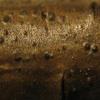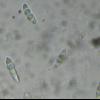
20-12-2025 23:08
Patrice TANCHAUDBonsoir, récolte sur sol sablonneux dans l'arri�

20-12-2025 15:47
Mirek GrycHi.These grew on pine wood that was heavily covere

18-12-2025 21:17
Pol DebaenstThe identification took me to Byssonectria deformi

15-12-2025 07:09
 Danny Newman
Danny Newman
indet. Rutstroemiaceae sp. on unk. fallen leavesMc

19-12-2025 10:10
Patrice TANCHAUDBonjour, récolte réalisée en milieu dunaire, a

18-12-2025 17:23
 Bruno Coué
Bruno Coué
Bonjour,je serais heureux d'avoir votre avis sur c

18-12-2025 18:07
Margot en Geert VullingsThese plumes were found on rotten wood.They strong

17-12-2025 18:35
 Michel Hairaud
Michel Hairaud
Bonjour à tous/Hi to everyone I am passing along
Dark spots on Caragana
Marja Pennanen,
11-01-2015 16:16
these about 0,2 mm wide spots on Caragana turned to be pyrenomycetes.
They are much wider than high and seem to grow under the outermost layer of the bark.
The spores are at least now hyaline, 18-24x4-6 and contain 4 droplets.
The asci are about 70-120x9-12.
Help with the determination is truly welcome: Marja
Alain GARDIENNET,
11-01-2015 22:02
Re : Dark spots on Caragana
Hi Marja,
Probably an Arthopyrenia species.
Alain
Marja Pennanen,
12-01-2015 13:44
Re : Dark spots on Caragana
Cher Alain,
merci!
So, it may be a lichen. This is an interesting piece of information for me.
I have thought, that lichens grow on a surface not under it...
Marja
merci!
So, it may be a lichen. This is an interesting piece of information for me.
I have thought, that lichens grow on a surface not under it...
Marja
Björn Wergen,
28-01-2015 12:30

Re : Dark spots on Caragana
Hi Marja,
indeed Arthopyrenia. This genus belong to a group of lichens called "pyrenocarpous lichens", because they simulate pyrenomycetes fruitbodies. They occur on the bark of various deciduous trees, in my region Arthopyrenia cinereopruinosa is commonest.
regards,
björn
indeed Arthopyrenia. This genus belong to a group of lichens called "pyrenocarpous lichens", because they simulate pyrenomycetes fruitbodies. They occur on the bark of various deciduous trees, in my region Arthopyrenia cinereopruinosa is commonest.
regards,
björn



